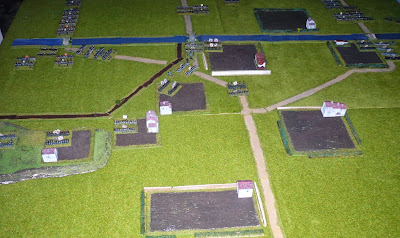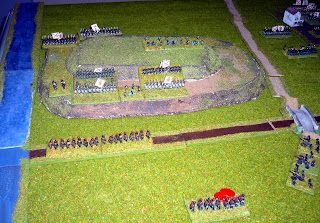Peninsular Campaign Summary - August 1808
Castanos re-organized units and then attempted to push north into La Mancha, but unfortunately for him, Barbou's Division was able to hold the mountain passes against the Spanish! Castanos was able to bring forward further units from the Seville area, but was unable to force the passes by the time the month ended, by which time Barbou had fled northwards towards Moncey, leaving only a small detachment of Swiss to block the path.
Leon and Castile:
Cuesta continued his southwards march and has now past Caceres on his way to Badajoz. The main action for the month however occurred in the area around Burgos. Initially Bessieres, outnumbered, fell back before Blake's Army of Galicia. However, although Blake was able to blockade Burgos, a reinforced II Corps through back Blake after he crossed the river to the west of Miranda. Suitably reinforced, Bessieres then threw back Blake again and relieved Burgos and finally in the series of three hard-fought French victories, defeated Blake in battle to the west of Burgos, in which battle Blake fell, shot resisting the advance of the Fusiliers-Chasseurs of the Imperial Guard. Blake's replacement, Gen Mahy, led the majority of the Army of Galicia in retreat to Palencia.
Aragon:
Joseph has made further slow progress at the siege of Zaragoza, but there is no practicable breach yet.
Catalonia:
The cat-and-mouse moves have continued. Duhesme has blockaded Gerona and some sickness has set in amongst the garrison, while Lechi remains around Hostalrich. Palacio is approaching Barcelona with his two small divisions, but does Duhesme dare to trust the Neapolitan garrison to hold out...
Valencia:
Cervellon brought Moncey's III Corps to battle South of Cuenca before the majority of the French reinforcements from Madrid could arrive, and after the very hard fought battle of Sisiante ,has defeated the French and forced them to retreat. Moncey has retreated to Madridejos via Ocana, as he looks to amass his entire Corps, reinforced by the surviving division (Barbou's) from Dupont's disaster in the South.
Portugal:
Wellington arrived in the area north of Lisbon and Junot, fearing to wait in case of the arrival of further British forces resolved to attack whilst the numbers were roughly equal and hoping to destroy the British early. Victory went to Wellington however and Junot's forces retreated in disorder into Lisbon. Rather than precipitately follow, Wellington then destroyed Loison's small isolated division before pursuing. It is likely that Junot will sue for terms rather than be blockaded in Lisbon.
Game Notes: Junot seems to be better off attacking, as the Tomb for an Empire rules allow the French player to decide whether the Convention of Cintra is signed or not. As being beseiged in Lisbon is a death sentence for Junot's Corps, it seems better to risk battle in the hope of victory then go for the convention if defeated. Barbou's victory over Castanos was played using the rules for minor combat - very lucky dice rolling resulted in a very unlikely victory for Barbou's conscripts. This has rather put back Spanish plans to unite Cervellon and Castanos early to re-take Madrid and drive the French as far northwards as possible. It also risks Joseph being able to actually capture Zaragoza at the first time of asking, which would be a severe blow to Spanish hopes.



















































